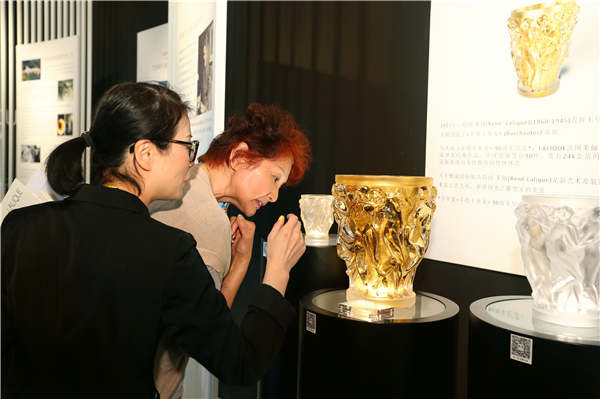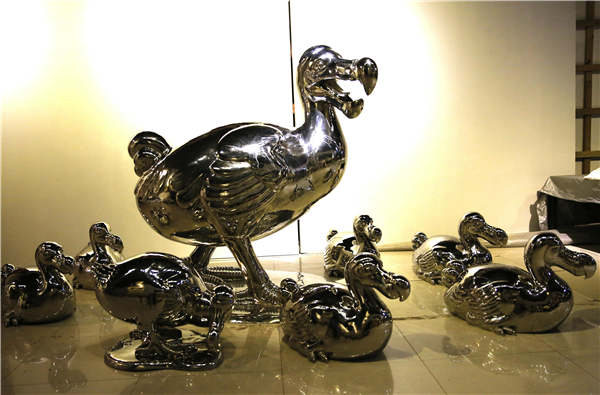
The annual Art Beijing, which is running at the National Agriculture Exhibition Center, has developed into a local, affordable fair with more space devoted to little-known, homegrown galleries, an increased presence of design art and more works by young artists.
He adds that collectors today pay more attention to artists' painting techniques, and they make quick decisions on buying.
Giving more exposure to young artists, he says, means more works are offered at affordable prices. That also will attract young collectors, who may thereafter establish a long-term relationship with the artists and the gallery and later mature to become serious collectors.
Xia says the fair has cultivated an increasing number of local "art consumers" who purchase artworks for home decoration. He adds that they spend on original works with investment potential, instead of cheap reproductions from wholesale bases like Shenzhen's Dafen Village.
"People want to learn how to appreciate a quality piece of art," he says.
"Meanwhile, the population of 'professional' collectors (who travel extensively at home and abroad to buy art) is growing, too, and is getting younger."

Art Beijing launched a "Design Beijing" section in 2015 to add appeal to ordinary audiences. French luxury brand Lalique has brought works of its Lalique Art division to the fair for the third consecutive year. It doesn't exhibit in an area dedicated to design art but rather at the fair's main hall for contemporary- and classic-art galleries.
It shows vases and ornaments, including an artist collaboration collection designed by the late Iraqi-born British architect Zaha Hadid.
Roger Von Der Weid, Lalique's managing director, says it is seeking collaboration with various Chinese and Japanese artists. "Our goal is to present some Chinese artworks, maybe next year or the year after, to develop our art business around the world, particularly in China."
Art Beijing's evolution has drawn criticism from regular visitors, who believe that a good fair not only sells as many works as possible but also provides some quality works that compete fiercely for the attention of discerning collectors.
Wang Ji, a Beijing collector, has visited Art Beijing for years. He says a lot of works on show are "too decorative" and lack the depth that will grab him for a second look. He says the best works to be seen are by master artists at the booths of Poly and Council auction houses that will be auctioned at upcoming sales.
Huang Xi, who visited Art Basel Hong Kong in March, says it sets a good example of how an high-end art fair has benefited not only rich collectors but also the residents. She says Art Basel has helped to create an atmosphere of appreciating art not only inside the venue but also outside, in the grassroots communities of Hong Kong.
"People buy tickets and bring their children. They want to see good works by good artists of the world, presented by leading international galleries, even though they may not be able to understand the works or afford them.
"The expansion of Art Basel to Hong Kong provides a good chance for mainland art fairs to learn to be more professional. It is not to simply cater to people's tastes. More importantly, it is to show them from the beginning what is the best."


















































